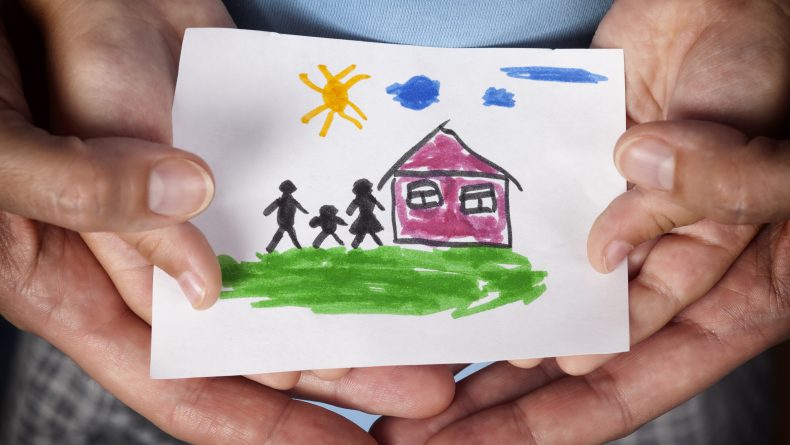Fostering In Japan Part I: Deciding To Expand The Family
How Our Son Met His Sister
Like adoption, fostering a child is a long process that involves careful planning, complicated procedures and adaptation that affects every family member. In these three-series we follow Melodie and her family on their journey from deciding to foster a Japanese girl, to meeting her and raising her as their older child.
“I want siblings!”
Two years ago, my son Shinji* started saying this pretty much every day. Having no other immediate family than us in Japan, we started understanding where he was coming from, but I was concerned about whether or not we could handle another child. I was over 50, so I knew that I didn’t have the energy for a really small child full-time. My husband, however, was well connected within the foster/adoptive community in our prefecture, so I suggested that we find a child who would like to do weekend visits with us. To do this, we had to start the foster parent certification process, which involved going to information sessions, attending talks by professionals and spending two days at an institution (I find it difficult to call these places “orphanages” now that I know many of the children in them have living parents) to play with the kids and see what their daily lives were like.
In order to expand our family, we decided to go through the process of getting our fostering certification. We began attending meetings where doctors and social welfare professionals gave statistics about the increasing number of children being put into institutionalized care, why this was happening, and what kinds of issues these children had. While the meetings were certainly informative, they were hardly practical. In other words, no advice was being given to potential foster parents about what to do when certain issues came up. We learned about ADHD, various learning disabilities, and so on, but no practical advice was given for how foster parents should handle these issues.
Our two-day visit to the institution was pivotal for me. My husband and I were assigned to spend an afternoon and evening with a different group of children. The first day, I was with a group of mixed-age children, including several high school students. We spent time doing origami, chatting, and cooking dinner together. I learned several things from doing this. First, I realized that many of these children had parents and had short visits with them from time to time. I also learned from some children that their parents’ relationships were far from happy. One little girl asked me, “Do you fight with your husband?” When I laughingly replied that we never did, she said, “My parents fight every day.” I also noticed that some of the older girls seemed to take pleasure in verbally or physically teasing the much younger ones.
I realized that many of these children [at Japanese institutions] had parents and had short visits with them from time to time.
The second day, I was placed with a group of third graders. I brought a book to read to them, but as soon as I sat down on the floor, I had one kid in my lap, one hanging off my back, and was surrounded by the others. A few little girls, marveling over my blonde hair, ran immediately to get their boxes of clips, combs, and brushes, and I felt like a practice head for hairdressing trainees. I enjoyed the “salon” treatment very much, and I could see how much these children needed adult attention and affection by their jostling each other to get it from me.
As we were going through the process, we found a Catholic institution through my husband’s contacts. The staff there asked if there were any kids who wanted to have a family experience and one little girl, Natsumi*, who was just turning 10, said that she wanted to give it a try.
Natsumi came to our house once a month for a weekend visit for about a year and a half. She was a very pretty and sporty girl; she was quiet, but had a beautiful smile, and was eager to do whatever we suggested. At home, she and I often spent time baking treats which she would take back to her friends at the institution. We didn’t talk much – to be honest, I didn’t know what to say to her. Once, while we were on a walk to the nearby grocery store, I asked if she’d ever met her parents. I was coming to realize that although many institutionalized children actually had parents, their parents couldn’t care for them for economic or other reasons (such as domestic violence). She looked at me sadly and said that she hadn’t. I could have bitten off my tongue. I realized I needed to be extra careful about what I asked her.
Once, […] I asked if she’d ever met her parents. […] She looked at me sadly and said that she hadn’t. I could have bitten off my tongue.
When we went somewhere, she would sit in the front seat and chat to my husband; if she sat in the backseat, she’d fall asleep. Actually, she fell asleep a lot. We figured it was because of the medicine she was taking for ADHD and stress. She and Shinji didn’t talk at all. During the weekends she stayed with us he was often out with his friends, and when he returned, would talk to us, but not her. I began approaching her by buying little gifts from time to time, after I found out what her likes were. And we gradually began thinking of how it would be if we were to live together…
*All names appearing in the article have been changed for privacy issues.
In Part II of “Fostering in Japan,” we follow Melodie and her family through the process of welcoming their foster daughter at home and beginning their life with her. If you have any questions about fostering in Japan for Melodie Cook, please contact us at editorial@gplusmedia.com and we’ll answer them in the final part of the series.














